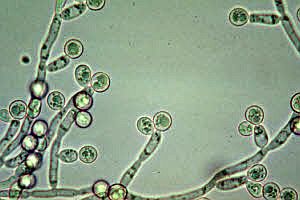“There are more than 200 species of Candida, but less than a dozen affect humans. Candida alternate in form from budding yeast cells called blastospores to hyphae, thread-like filaments that bore through tissue and individual cells. The fact that it can alternate back and forth in form makes it harder for the immune system to respond to it.” – M Edwards
 NaturalNews – The most common fungus to negatively affect humans, Candida albicans, primarily colonizes the skin and the mucosal membranes of the mouth, genitals, and digestive tract. There are also a few other types of Candida that can impact our health as well; all strains respond well to naturopathic treatment.
NaturalNews – The most common fungus to negatively affect humans, Candida albicans, primarily colonizes the skin and the mucosal membranes of the mouth, genitals, and digestive tract. There are also a few other types of Candida that can impact our health as well; all strains respond well to naturopathic treatment.
Conventional medical experts say that from 30-70% of the present population have a benign colonization of this yeast. I would bet any well trained naturopath will tell you that more than 90% of the population hosts a Candida colonization and most of them are not benign, not in our modern, processed, easy-food society. In addition, I have never met anyone suffering from any illness, who is not dealing with an overabundance of Candida.
When Candida leads to disease, conventional medical belief states that the infection can be localized, invasive, or systemic. Alternative medical belief would argue that a local infection such as a skin infection, vaginitis, or thrush is an indication that the gut, and likely the whole rest of the body, is already overwhelmed. Lending credence to this belief is the fact that the fastest way to kill any type of Candida infection, and insure it does not come right back, revolves around balancing the gut microbes. Continue reading
